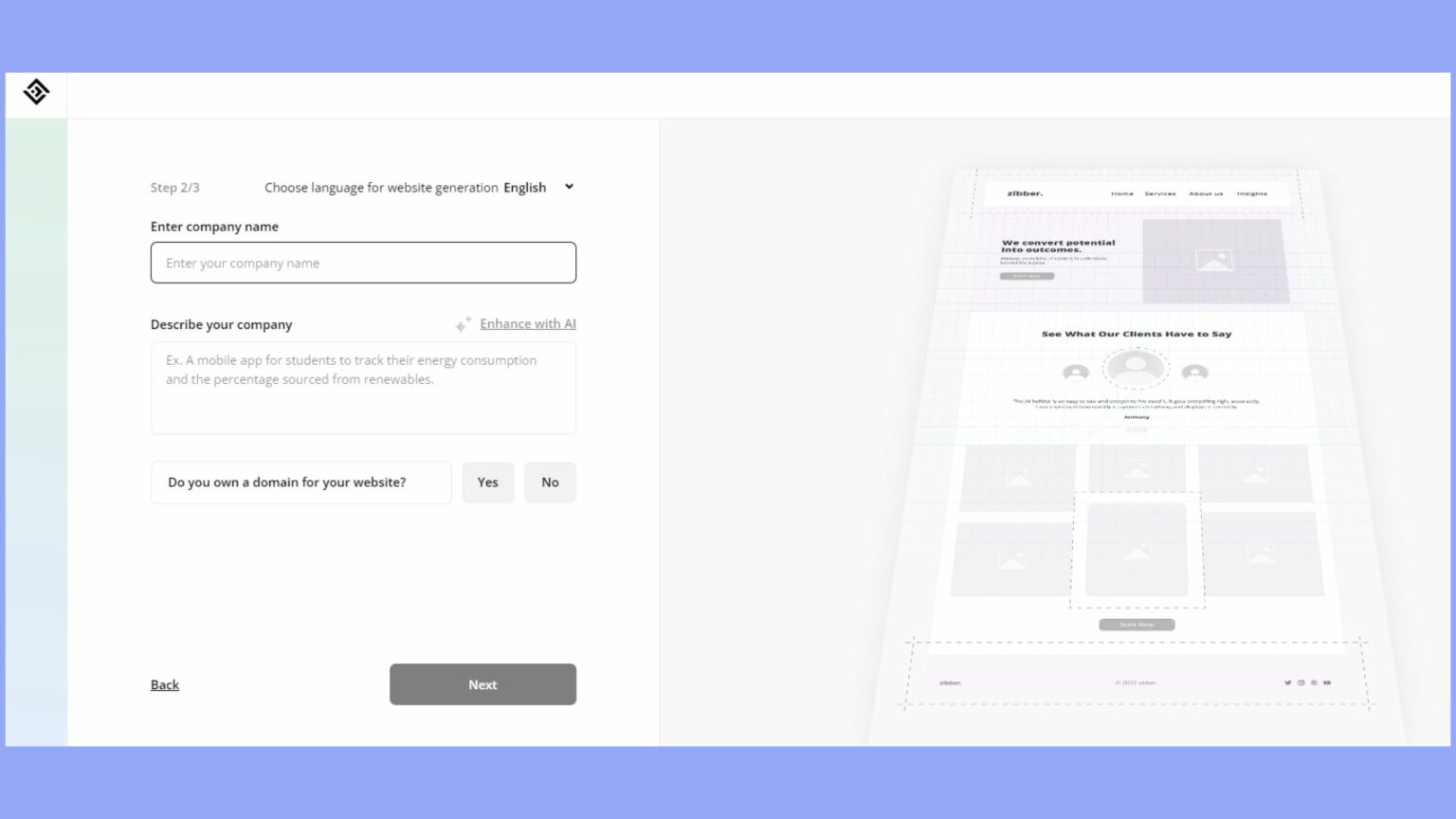Starting a virtual assistant (VA) business offers a pathway to entrepreneurial success. This guide will walk you through essential steps, from evaluating your skills and defining your target market to creating a business plan and setting up the legal framework. You’ll also learn about building an online presence, pricing your services, managing finances, and effective client communication.
FAQ
How much does it cost to start a virtual assistant business?
Starting a virtual assistant business can cost as little as $500 to $1,000. This includes expenses for a computer, reliable internet connection, software subscriptions, marketing materials, and professional services such as website hosting and design. As your business grows, you might incur additional costs for more advanced tools and advertising.
Is a virtual assistant business profitable?
Yes, a virtual assistant business can be highly profitable. Profitability depends on factors such as your range of services, rates, and ability to manage multiple clients effectively. Many virtual assistants earn between $25 to $50 per hour, with experienced VAs earning higher rates.
How do beginners start virtual assistants?
Beginners can start by identifying their skills and the services they want to offer. Creating a professional website, setting up social media profiles, and joining freelance platforms can help attract clients. Networking and gaining initial experience through smaller projects or internships can also be beneficial.
Can I start my own virtual assistant business?
You can start your virtual assistant business with minimal investment and overhead costs. All you need is a computer, an internet connection, and relevant skills. Building a strong online presence and marketing your services effectively will help you attract clients and grow your business.
Should I have an LLC as a virtual assistant?
Forming an LLC as a virtual assistant can provide legal protection and credibility. An LLC separates your personal and business assets, protecting you from potential liabilities. It also can make your business appear more professional to clients. However, it’s important to consider the costs and administrative requirements of forming an LLC.
How to start a virtual assistant business step-by-step

When starting your virtual assistant business, evaluating your skills and defining your target market is crucial.
These steps will help you align your services with client needs and establish a strong business foundation.
1. Decide what services your virtual assistant business will offer
Deciding what services your virtual assistant (VA) business should offer involves assessing your skills, market demand, and potential profitability.
Start by assessing what you’re good at and what you enjoy doing. List down your skills, such as administrative tasks, social media management, or bookkeeping. Focus on the areas where you excel.
Consider taking online courses or certifications to enhance your skill set. You increase your value to potential clients by specializing in a specific area.
For example, if you are skilled in digital marketing, consider positioning yourself as a Digital Marketing Virtual Assistant.
Here’s how you can make an informed decision:
- Research market demand: Investigate what services are in high demand by businesses and entrepreneurs. Browse job boards, VA forums, and freelance platforms to see what tasks clients frequently request. Identifying gaps in the market can help you find specialized services that fewer VAs offer.
- Analyze competition: Look at successful VA businesses and the services they offer. Determine how you can differentiate your offerings through specialized skills, exceptional customer service, or competitive pricing.
- Consider profitability: Some services are more lucrative than others. For instance, specialized tasks like social media management or bookkeeping typically command higher rates than general administrative support. Evaluate which services will bring you the best return on investment.
- Start broad, then niche down: Initially, offering a broad range of services can help you attract a variety of clients and understand what you enjoy and excel at. Over time, you can narrow your focus to the specialized services you’re most passionate about and bring in the most business.
Typical services offered by virtual assistants
Virtual assistants provide a wide array of services tailored to meet the diverse needs of businesses and entrepreneurs. Here are some common services that VAs typically offer:
- Administrative support: This includes tasks like managing emails, scheduling appointments, data entry, document preparation, and customer service. Administrative support forms the backbone of many VA businesses.
- Social media management: VAs can manage social media accounts, create content, schedule posts, engage with followers, and analyze social media metrics to help businesses grow their online presence.
- Content creation: Writing blog posts, articles, newsletters, and website copy are services that many VAs offer. This also includes creating visual content like graphics and videos.
- Bookkeeping and financial services: Managing invoices, tracking expenses, reconciling accounts, and preparing financial reports are specialized services that require a good understanding of accounting principles.
- Email marketing: VAs can design email campaigns, manage email lists, and analyze the performance of email marketing efforts to improve engagement and conversion rates.
- Customer support: Another common service is providing customer support via email, chat, or phone. This includes handling inquiries, processing orders, and resolving issues.
- Project management: Coordinating and managing projects, keeping track of deadlines, assigning tasks, and ensuring project milestones are met are crucial services that help businesses run smoothly.
- Technical support: For tech-savvy VAs, offering IT support, website maintenance, and troubleshooting technical issues can be valuable services.
- Personal assistance: Some VAs offer personal assistance services, such as travel planning, event coordination, and managing personal schedules for busy entrepreneurs.
- Research: Conducting market research, competitor analysis, and gathering data on various topics are essential tasks that can help businesses make informed decisions.
By understanding your strengths and market needs, you can offer a compelling mix of services catering to a broad audience while allowing room to specialize in areas that interest you the most.
2. Define your target market
Understanding your target market is key to finding clients. Think about the types of businesses or individuals who would benefit from your services. Are you targeting small businesses, entrepreneurs, or larger corporations?
Research your target market to understand their needs and pain points. This allows you to tailor your services and marketing efforts specifically to them.
Knowing your audience will also help you create a more focused marketing strategy and discover effective ways to reach them.
Steps to define your target market:
- Identify who needs your services.
- Research their challenges and needs.
- Tailor your services to meet those needs.
- Develop a marketing strategy to reach them.
3. Creating your business plan
Creating a business plan will help clarify your virtual assistant business’s direction and ensure it is financially viable. This section will guide you in outlining your business operations and projecting your financials.
Outline business operations
Start by detailing your business operations. Define the types of services you will offer, such as administrative tasks, social media management, or customer support.
This will help you identify the tools and software you may need, like project management apps or CRM systems.
Next, outline your daily workflow. Determine how you will manage tasks, communicate with clients, and track project progress.
Set clear standards for quality and turnaround times to meet client expectations consistently.
Decide on your business structure and management approach. Will you operate as a sole proprietor, or form an LLC?
Choose a business name that reflects your brand identity. Register your business as necessary.
Project your financials
Detailing the financial side of your business plan is essential.
Start by estimating your initial expenses, such as software subscriptions, marketing costs, and any necessary equipment.
Next, set your pricing rates for the various services you offer. Decide whether you will charge hourly or offer package rates.
Calculate how much income you need to cover your expenses and make a profit.
Create a budget that outlines all your anticipated earnings and expenditures. Include an emergency fund for any unexpected costs.
Project your cash flow to predict how money will move in and out of your business over time.
4. Setting up the legal framework
You’ll need to create a solid legal foundation to start your virtual assistant business. This includes choosing the right business structure, registering your business, and understanding important tax and accounting details.
Choose your business structure
The first step is to decide which business entity best suits your needs. Here are some options:
- Sole Proprietorship: Easy to set up but offers no personal liability protection.
- Limited Liability Company (LLC): Provides personal liability protection and is flexible.
- Corporation: Ideal for larger businesses but more complex to set up and manage.
- Partnership: Suitable if you’re starting the business with someone else. Liability and management responsibilities are shared.
Each structure has its advantages and disadvantages. Consider consulting a legal advisor to make an informed decision.
Register your business
Once you’ve chosen your structure, it’s time to register your business. This involves the following steps:
- Name your business: Pick a unique name and check its availability.
- Register your business name: Register with your state or local authorities.
- Get an Employer Identification Number (EIN): Apply for an EIN from the IRS. This is like a social security number for your business.
Your business might also need specific licenses and permits depending on your location and the services you offer. Check with local government offices to ensure you comply with all requirements.
Understand taxes and accounting
Proper tax and accounting setup is crucial for avoiding penalties and ensuring smooth operations. Here’s what you need to do:
- Register for taxes: Depending on your business structure, you may need to register for federal, state, and local taxes.
- Open a business bank account: Keep your personal and business finances separate.
- Set up accounting: Use accounting software to track income and expenses. Consider hiring an accountant, especially if you’re not familiar with tax rules.
Lastly, think about business insurance. It can protect you against unexpected events and liabilities. This small step can save you a lot of trouble in the future.
5. Pricing your VA services
Knowing how to price your services as a virtual assistant (VA) is crucial to ensuring your business is profitable while still attracting clients. You will need to understand market rates and create a pricing structure that reflects your expertise and value.
Understanding the market rates
Research is the first key step. Start by looking at what other virtual assistants are charging.
Most new VAs set their hourly rates between $20 to $30. Experienced VAs may charge $50 or more per hour, depending on their skill level and experience.
Consider the types of services you offer. Specialized tasks like website design or social media management can command higher rates than more general administrative work.
Look at job postings and freelancer platforms to gauge current rates for similar services.
Additionally, think about your target clients’ budget and willingness to pay. High-end businesses might be willing to pay more for quality service, while small businesses might have tighter budgets.
Creating your pricing structure
Once you understand market rates, decide on a pricing structure. There are two main options: hourly rates and package deals.
Hourly rates: This is straightforward and flexible. You charge clients based on the number of hours you work. This is ideal for ongoing or variable tasks.
Package deals: Here, you bundle a set of services for a flat fee. For example, you might create a website design package for $500.
Packages can provide clients with more predictable costs and give you consistent work.
6. Building an online presence
To succeed as a virtual assistant, having a strong online presence is essential. This involves creating a professional website to showcase your services and using social media to expand your reach.
Simplify WordPress with 10Web
Automate manual work with 10Web Managed WordPress Hosting and 10Web AI Website Builder. Optimize your WordPress website effortlessly.
Create a professional website
Building a website is a crucial step. Your website acts as your digital storefront, where potential clients can learn about your services, skills, and experience.
Key sections to include:
- Home: A brief introduction to your services and yourself.
- About: Detail your experience, skills, and what sets you apart.
- Services: List of services you offer with clear descriptions.
- Testimonials: Positive feedback from previous clients.
- Contact: Easy ways to reach you, such as a contact form or email address.
Start by choosing a user-friendly platform like Wix or WordPress. 10Web’s AI-powered platform helps you generate a business name, devise a marketing plan, and create a business website in just minutes.
- Get started with the AI Website Builder to generate a website based on your description.

- Customize your website with the drag-and-drop editor and professional widgets.

- Generate content and images with AI editing tools.

Choosing a clean, professional design that reflects your brand helps build your online presence. The AI Website Builder’s pre-made templates and website generation tools immediately allow you to create a professionally designed website.
Optimize your website for SEO to ensure it ranks well in search engines. Use relevant keywords related to your services. This helps potential clients find you more easily.
Leverage social media marketing
Using social media effectively can help expand your business. Choose platforms where your potential clients are most active, such as LinkedIn, Facebook, and Instagram.
Steps to follow:
- Create business profiles: Set up professional profiles on chosen platforms.
- Consistent branding: Use the same logo, color scheme, and tone across all platforms to establish a recognizable brand.
- Regular updates: Post regularly about your services, industry tips, or client testimonials.
- Engage with your audience: Respond to comments and messages promptly to build relationships with followers.
- Join groups: Participate in relevant groups or forums to increase visibility.
Essential tools and technology
Starting a virtual assistant business requires leveraging the right tools and technology to streamline your work and ensure efficiency. You’ll need software and hardware to stay organized and manage your projects.

Software and hardware needs
You need reliable hardware and essential software to run your virtual assistant business smoothly.
A good laptop with enough processing power and memory is fundamental since you’ll handle multiple tasks. Choose one with a high-resolution screen for comfort during long hours of work. An ergonomic mouse and keyboard can also help prevent strain.
On the software side, install office suites like Microsoft Office or Google Workspace for word processing, spreadsheets, and presentations.
Utilize accounting software such as QuickBooks or FreshBooks to manage finances, billing, and invoicing. AI tools can automate repetitive tasks and improve productivity.
Ensure you have a good antivirus program to protect your sensitive client information.
Project management and time tracking
Effective project management and time tracking are crucial in a virtual assistant business.
Start by using project management tools like Trello or Asana to organize tasks and set deadlines. These platforms allow you to create boards or lists to keep track of various projects.
Invest in time tracking software like Toggl or Clockify. These tools help you monitor the time spent on each task and provide detailed reports.
This is important for billing clients accurately and understanding where your time goes. Calendar apps like Google Calendar or Microsoft Outlook are also helpful for scheduling meetings and setting reminders.
Managing your finances
Effective financial management is crucial for your virtual assistant business. This includes setting up dedicated business accounts and keeping clear records of income and expenses.
Setting up a business bank account
A dedicated business bank account helps you keep personal and business finances separate. It makes tracking expenses easier and simplifies tax preparation.
Start by choosing a bank that offers business accounts with low fees and good services. Then, gather the necessary documents, such as your business license, EIN (Employer Identification Number), and personal identification.
When setting it up, check for features like online banking, mobile deposits, and fee structures before making your choice.
Managing your business finances through a dedicated account also establishes your business’s credibility. It helps you keep an accurate record of all transactions and demonstrate to the IRS or any potential investors that you take your business seriously.
Bookkeeping and invoicing
Good bookkeeping practices are key to running a profitable business. Use accounting software to track your income and expenses. Popular options include QuickBooks, Xero, and Wave.
These tools can automate many tasks, making it easier for you to keep track of your finances. Records should include all sales, expenses, and any payments made to subcontractors.
Invoicing clients promptly ensures your cash flow remains steady. Create professional invoices that clearly state the services provided, payment terms, and due dates.
Many accounting software options also offer invoicing features, where you can easily generate and send invoices directly to your clients.
Finally, regularly review your financial statements to monitor your business’s health. Identify any areas where you can cut costs or increase revenues. Keeping an eye on your books allows you to make informed decisions and keep your business on the path to success.
Marketing and client acquisition
To succeed as a virtual assistant, focus on building strong relationships and leveraging testimonials and referrals. These strategies will help you attract and retain clients.
Networking and building relationships
Networking is key to growing your virtual assistant business. Attend trade shows and exhibitions to meet potential clients. Bringing business cards and wearing a statement tee shirt can make you memorable.
Join local and online business groups to connect with other professionals. These platforms can open doors to collaborations and referrals.
Use social media to engage with your audience. Platforms like LinkedIn allow you to showcase your skills and attract clients. Regularly post content that demonstrates your expertise and value.
Leveraging testimonials and referrals
Testimonials and referrals can be powerful marketing tools. Encourage satisfied clients to leave positive reviews on your website or social media pages. These endorsements build trust and credibility.
Set up a referral program. Offer incentives for clients who refer new business to you. This could be a discount on services or a free consultation.
Keep a portfolio of your best work. Share this with potential clients to show your capabilities. Real-life examples of your success can help convince them to hire you.
Simplify WordPress with 10Web
Automate manual work with 10Web Managed WordPress Hosting and 10Web AI Website Builder. Optimize your WordPress website effortlessly.
Effective communication and client management
Building strong relationships with clients is essential. Successful virtual assistants use clear communication and outstanding customer service to ensure smooth collaborations.
Setting communication guidelines
Establishing clear communication guidelines helps avoid misunderstandings. Set expectations about response times, preferred communication platforms, and availability.
Use tools like email, messaging apps, or project management software to keep in touch.
Create a schedule for regular updates. Consistent communication keeps everyone informed, whether it’s weekly summaries or occasional check-ins. Make sure your clients know when they can expect to hear from you.
Document important information and decisions. Keeping detailed records helps prevent confusion. Use a shared calendar, task lists, or documentation tools to keep everyone on the same page.
Establish a contract
Before beginning work with a client, it’s essential to establish a contract. This agreement outlines the specific scope of work you’ll be responsible for, including the tasks to be performed and the duration of the project. It also details the payment terms, including your pricing structure, and confirms your status as a contractor.
Allow your client adequate time to review the contract before finalizing it. Ensure that both parties agree to and sign the contract before commencing any work, guaranteeing that you will be compensated appropriately. You can find numerous examples of virtual assistant contracts online to guide you. Additionally, ensure your client provides the necessary tax forms and any ACH deposit paperwork if that is your preferred payment method.
Providing exceptional customer service
Providing excellent customer service is crucial for retaining clients.
Be responsive. Quickly acknowledge client messages to show that you value their time and concerns. Let them know you are working on it if you don’t have an immediate answer.
Listen actively to your clients’ needs. Understanding their specific requirements ensures you can deliver the best service. Ask clarifying questions if necessary.
Follow through on commitments. If you promise to complete a task by a certain time, make sure you do. Reliability builds trust and strengthens the client relationship.
Stay organized. Use task management tools and keep track of deadlines and deliverables to ensure you meet client expectations consistently.
This helps maintain a professional image and keeps clients satisfied with your services.
Pros and cons of starting a virtual assistant business
Starting a virtual assistant (VA) business can be highly rewarding, but like any business venture, it has its advantages and challenges. Here are some key pros and cons to consider:
Pros
Low startup costs
Starting a VA business requires minimal investment. You typically need a computer, a reliable internet connection, and basic software. There are no significant overhead costs like renting office space.
Flexibility
One of the greatest benefits is the flexibility it offers. You can set your own hours, choose your clients, and work from anywhere. This allows for a better work-life balance.
High demand
With the growing number of businesses moving online, there is a high demand for virtual assistants. Companies of all sizes are looking for VAs to handle various tasks, making it easier to find clients.
Diverse opportunities
VAs can offer a wide range of services, from administrative support to social media management and technical assistance. This diversity allows you to leverage your unique skills and interests.
Scalability
As your business grows, you can scale up by taking on more clients, offering additional services, or even hiring other virtual assistants to expand your team.
Cons
Income variability
Income can be inconsistent, especially in the beginning. Clients may come and go, and it may take time to build a stable client base. Financial planning and budgeting become crucial.
Isolation
Working from home can sometimes lead to feelings of isolation. You might miss the social interaction that comes with working in an office environment. It’s important to find ways to stay connected, such as joining VA communities or coworking spaces.
Self-discipline required
Running a VA business requires a high level of self-discipline and time management skills. Without a traditional office structure, it can be challenging to stay focused and productive.
Client dependence
Your income and workload are heavily dependent on your clients. Difficult clients or those who don’t pay on time can create stress and financial instability. Building strong, reliable client relationships is essential.
Continuous learning
The digital landscape is constantly evolving. To stay competitive, you must continually update your skills and stay abreast of new tools and technologies. This can be time-consuming and require ongoing investment in training and education, although most tech-adjacent jobs share this dilemma.
In summary
Launching a virtual assistant business involves thorough planning and strategic execution. You can build a successful and sustainable VA business by evaluating your skills, understanding your market, creating a solid business plan, and utilizing effective tools and marketing strategies. Prioritize clear communication and exceptional service to foster strong client relationships and ensure long-term success.
















